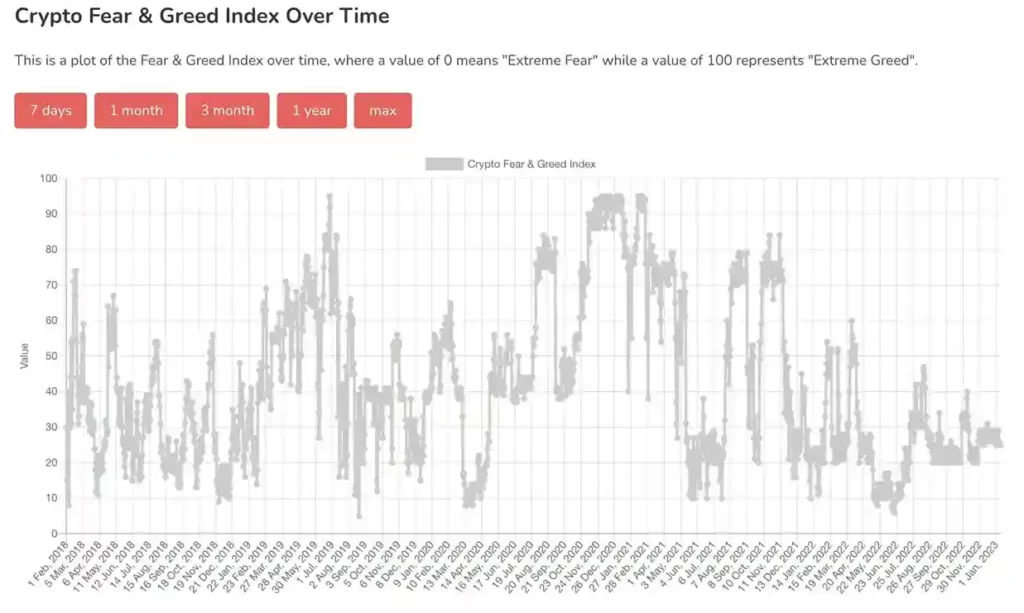Traditional financial markets are cyclical, and crypto markets are no different, with periods of high and low prices. Price trends often define financial markets, whether cryptocurrency, stocks, real estate, or other assets. These trends are frequently referred to as either bull or bear markets.
- Origins of the term Bull and Bear Markets
- Bull and Bear Markets: Explained
- Crypto Market Sentiment
- What Triggers Crypto Bull Markets
- What Triggers Crypto Bear Markets
- Characteristics of Crypto Bull and Bear Markets
- Supply and Demand
- Trading Volume
- Investor Sentiment
- Wider Economic Outlook
- Startup growth
- Media Sentiment
- Innovation
- Investing During Bull and Bear Cycles
- Conclusion
Bull and bear markets indicate the general direction of a financial market over a given time frame. A bull market represents periods when the market is in an upward trajectory. On the other hand, a bear market is characterized by downward trending price movements.
Origins of the term Bull and Bear Markets

While the origins of the terms in financial parlance remain unclear, historical literature often points out two common explanations:
- It is thought that the words “bear” and “bull” came from how each animal attacks its prey. A bear attacks in a swiping-down motion while a bull raises its horns to strike. These actions are metaphorically used to describe how prices move in a bull market (up) and a bear market (down).
- Another alternative theory is based on the bear skin trading customs of the eighteenth century. Middlemen would charge buyers a high price with a future delivery date for bear skin they did not own. This was done under the assumption that the cost price would continue dropping. These middlemen made a sizable profit overall by purchasing the skin from the bear catcher for less money and delivering it to the buyer. The term “bearskin jobbers” and later “bears” were frequently used to describe these middlemen.
The term “bear” gained popularity among investors and stock traders with a specific meaning. Investors began using terms like “bearish” and “bear market” to describe those anticipating price declines and an overall down-trending market. Conversely, the term “bull” soon followed as the opposite of “bears.” This was a result of the 19th-century bloodsport of bull and bear fighting.
Bull and Bear Markets: Explained
The terms bull and bear markets have been used in the stock market for centuries, and the crypto market has widely adopted this terminology. Financial assets like stocks, gold, real estate, and crypto operate cyclically through upward and downward movements in the asset price.
Markets experience these cyclical trends over short-term(hours and days) and long-term (months and years) periods. Financial assets, especially cryptocurrencies, frequently experience daily volatility. Therefore, only more prolonged periods of sustained upward and downward price movement are identified as bull or bear markets. Furthermore, a market must experience considerable upward or downward price swings of at least 20% to reach a bull or bear status.
Bull Markets
A bull market or a bull run, is a protracted period of time during which markets exhibit an upward trend and assets appreciate in value. During a bull market, the upward price action is inextricably linked with optimistic investors. As confidence in the market rises, optimistic or “bullish” investors raise the price of assets further, thereby creating a positive feedback loop. The term “bulls” refers to investors who anticipate that an asset’s price will rise over time. In general, along with the asset prices rising, bull markets reflect a period of prosperity and confidence.
Bear Markets
Bear markets typify markets in a decline where asset prices experience a downward trend. As prices decline, investors begin to lose faith in the ability of prices to recover, leading to additional selloffs and downtrends.
In the crypto market, assets often undergo market corrections. However, the terms, market correction, and bear markets are entirely different. A market correction typically denotes a short-term price decline and is not as severe as a bear market. Markets generally recover more quickly following corrections and more gradually following bear markets. Relief rallies or bear traps are expected in a bear market. These are short-lived upward price movements that only last a couple of weeks.
Crypto Market Sentiment
Numerous factors can cause a bull or bear market in cryptocurrencies. Speculative interest and public confidence significantly impact the prices of cryptocurrencies. Therefore, market sentiment or the overall attitude of investors is the catalyst to changing the market direction in the crypto space. The following factors often influence market sentiment in the crypto space:
- Positive or negative media coverage
- Mainstream and institutional adoption
- The timeline of the market cycle in relation to the previous bull run or bear market.
- Events or news reports about technological advancements, regulatory updates, security lapses, macroeconomic setbacks, or celebrity endorsements.
What Triggers Crypto Bull Markets
Positive investor sentiment is what drives a bull market. However, to reach the level of optimism required to continue rising asset prices, various factors cause the emergence of a crypto bull market.
Among these are positive and strong macroeconomic conditions such as increased Gross Domestic Product (GDP) and low unemployment rates. Crypto bull markets are thus significantly influenced by factors that change the trajectory of traditional markets.
The cryptocurrency market is still in its infancy and has fewer investors than traditional markets like the stock market. As a result, the factors that drive crypto bull runs may be quite specific to the market. These include support from mainstream media and pop culture, positive assertions from established financial institutions, the infusion of institutional capital, and the introduction of cryptocurrency-specific products like exchange-traded funds (ETF). Combining these unique crypto factors with traditional positive macroeconomic factors signals positive momentum and piques investor interest.
What Triggers Crypto Bear Markets
Negative investor sentiment causes a cascade of downward pressure on asset prices. While optimism encapsulates a bull market, fear drives bear markets.
A number of factors trigger fear among crypto investors. This includes a weak economy with high unemployment rates, global unrests like wars or pandemics, negative press about government crackdowns or regulatory bans on cryptocurrency trading, and negative rhetoric from established financial institutions.
Characteristics of Crypto Bull and Bear Markets
The movement of asset prices primarily distinguishes a bull market and a bear market. However, additional characteristics help investors identify market trends and cycles.
Supply and Demand
Bull markets are characterized by increasing demand with weak supply. Most investors buy assets and not sell, thereby raising prices further.
In a bear market, however, people are more likely to be looking to sell than to buy assets. The supply exceeds demand, and as a result, asset prices decline.
Trading Volume
Trading volumes are a good indication of market cycles. Bull markets frequently correlate with high trading volumes. Trading volume is typically at its peak before a bull market reaches its cycle top.
On the other hand, during bear markets, trading volumes are typically low or stagnant.
Investor Sentiment
As discussed earlier, investor sentiment and psychology correlate closely with the crypto market’s performance. In bull markets, investors rush to purchase assets in the hopes of realizing higher returns on investment (ROI). As a result, bull markets are characterized by positive and high levels of investor confidence.
Investor sentiment is frequently negative during a bear market. Investors often panic sell their assets, which further lowers the price.
Wider Economic Outlook
Like any other market, the crypto bull and bear markets are intrinsically linked to the broader economy. Strong economies with rising GDP, low unemployment rates, higher company revenues, and rising employee salaries often accompany bull markets.
On the other end of the spectrum, a bear market correlates with a weak economy with lower GDP, decreased consumer spending, lower business profits, and rising unemployment rates. The general willingness to take on risk for speculative investments declines in response to a weak economy and its adverse effects on people.
Startup growth
In the crypto space, a high number of new projects appear through Initial Coin Offerings (ICOs), typically signal a bull market. To understand ICOs, this article serves as a helpful guide.
On the other hand, because of the lack of public funding, new project launches are rare during a bear market.
Media Sentiment
Like investor sentiment, the general outlook from mainstream media through news sources and social media platforms indicates stages of a bull and bear markets cycle. In a bull market, media sentiment is generally buoyant. There is an increase in media coverage of market upswings and exorbitant price forecasts.
In a bear market, media coverage is often pessimistic, with an increase in reports that propagate fear, uncertainty, and doubt (FUD).
Innovation
A high degree of innovation in projects usually takes place in bull markets. This is because there is increased investment and spending power, easier user onboarding, more acquisitions, and larger marketing budgets.
That said, innovation and growth during bear markets are telltale signs of a project’s pedigree in the industry. For example, Ethereum’s merge from proof of work to proof of stake, arguably the most significant technological advancement in the blockchain’s history, occurred during a bear market.
Investing During Bull and Bear Cycles
Historical data from charts suggests that there have been four distinct crypto market cycles with periods of bull and bear markets. The data also shows some predictable and comparable trends that tend to repeat themselves every four years that coincide with Bitcoin’s halving schedule.
Great insights from @ArcaneResearch's Ahead of the Curve report:
"BTC’s bear market has now lasted at lengths comparable to the bear markets of 2014-15 and 2018." pic.twitter.com/I61RG1tB70
— Jaran Mellerud 🟧⛏️🇳🇴 (@JMellerud) November 30, 2022The characteristics mentioned above aid investors in identifying market cycles. Furthermore, technical analysis and trading tools allow investors to enter and exit markets at opportune times. For example, trading indicators like the Pi cycle top indicator and the fear and greed index are some tools that investors use to identify market trends.


Historical data, common characteristics, and trading indicators are helpful in identifying bull and bear markets. That said, timing the market is challenging for even seasoned investors. Buying assets at the lowest point in a bear market and selling at the highest peak of a bull market is extremely difficult and risky.
Bull and bear markets are often FOMO-enticing, whereas bear markets are fear-inducing. Both these emotions cloud an investor’s judgment. Therefore adopting a patient strategy is vital. A tried and tested investment strategy to manage uncertainty and volatility is dollar-cost averaging. It involves a systematic investment of a fixed amount at regular intervals irrespective of market and price swings.
After employing a long-term investment strategy, an understanding of risk to reward is critical. While bear markets are damaging and arduous periods, they are also considered the most optimal times to invest. Negative news during bear markets frequently perpetuates further fear among investors, which causes irrational market selloffs. Therefore, investments during a bear market represent immense opportunities where potential upsides far outweigh potential downsides.
You don't become a millionaire by buying #crypto in the bull run.
You become one by buying in the bear market, and selling in the bull market.
— Sjuul | AltCryptoGems (@AltCryptoGems) December 31, 2022Conclusion
Crypto markets experience periods of bullish and bearish price action like any other traditional financial market. While the volatility in the upswings and downswings remains far more significant in the crypto space, established crypto assets like Bitcoin are exhibiting signs of maturity with diminishing returns and losses and overall less volatility compared to previous cycles.
One thing is clear – next cycle I doubt anyone will be debating diminishing returns for #Bitcoin. Four cycles in a row where diminishing returns played out.
— Benjamin Cowen (@intocryptoverse) May 8, 2022Understanding crypto bull and bear markets trends and learning to recognize them is critical for anybody in the space looking to make a strategic and successful investment. However, there are other factors that investors must consider when entering the crypto space for long-term success. This includes developing a keen eye for high-quality projects and assets, learning about crypto-specific concepts like cryptocurrency wallets, and being aware of common scams.




















